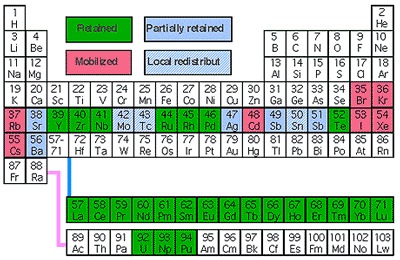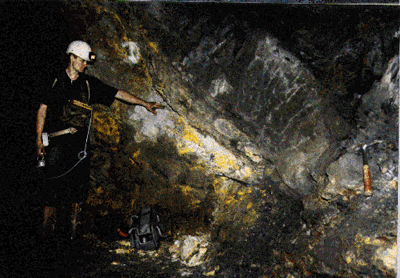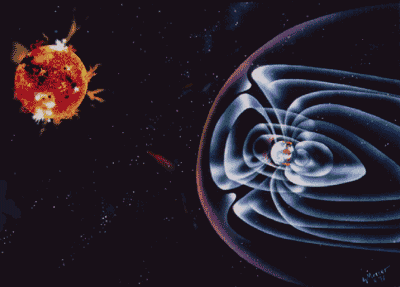When Stephen Hawking said “The only thing nature abhors more than a vacuum is a naked singularity”. He was talking specifically about the laws of physics in relation to black holes. But his observation could equally apply to the body of human knowledge and the existence of unprecedented phenomena. The only thing that drives our desire for knowledge more than a complete absence of information is the presence of a single, undeniable but unprecedented piece of evidence. Such tantalizing evidence demands explanation.
Unique evidence is hard to handle precisely because it is unparalleled. Science relies on repeatable experiments that can be designed to test hypotheses. Part of the challenge with understanding unprecedented phenomena is learning why they are without parallel in the first place. Are they in some way special, or just rare and the first to be discovered?
Unprecedented phenomena do not fit easily into the general framework of science. They create a dilemma: Should existing theory be modified to handle a single piece of evidence? Or can the phenomenon be treated as a special exception? Or is a completely new theory required to explain the evidence?
Some of the greatest problems in science involve the explanation of unprecedented phenomena: The presence of life on earth but nowhere else in the solar system, the lack of a rigorous explanation for the existence of human consciousness and the problem of why the Universe goes to the trouble of existing at all. No one is quite certain if these phenomena are unique and if they are what their uniqueness might mean. One thing is certain – if we ever solve any of these problems the solution will have many consequences.
Understanding unprecedented phenomena like those described above is one of the best ways to rapidly expand the breadth of our knowledge. Such an understanding leads to a cascade of other dependent findings. The problems described above raise big questions that often attract religious explanations and more than their fair share of crackpots. In an effort to avoid theological arguments I was trying to think of a case which does not deal with such big issues. Then I remembered the Oklo Fossil Reactors.
The Oklo Fossil Reactors
I first heard about The Oklo Fossil Reactors in the late 1980s while I was working at the British Geological Survey. A colleague of mine was developing calibration procedures for devices used to measure radioactivity. He was explaining various methods of calibration and mentioned that measuring the U-238 U-235 ratio was one way to calibrate a device since the ratio was well known and was constant throughout all natural sources in the solar system U-238 (99.27%) U-235 (0.72%). Except, he said, in the case of the Uranium ore from Oklo mine in Gabon, Africa. He then explain how in March 1972 some scientists at the Pierrelatte Uranium enrichment plant in France were conducting mass spectrometry tests and noticed that the U-238, U-235 ratio in their samples was not what it should be. These measurements caused considerable consternation and after dismissing all the obvious causes; miss-calibration, contamination etc, they traced the exceptional samples back to Africa. At first they suspected that someone had exploded a nuclear bomb in Africa, without anyone noticing, as the only way to change the U-238, U-235 ratio is by nuclear reaction. This theory was dismissed when the unusual readings were found to localized to ore from the Oklo mine. It gradually became apparent that a natural nuclear fission reaction had occurred at various sites within the ore body and that these reactions had been responsible for changing the U-238 U-235 ratio. At least that’s how I remember the story.
Zone 15 is one of the remaining Oklo Fossil Reactors, it is accessible through a tunnel from the main mine workings
The true Oklo detective story is considerably more elaborate. The main reason it was so difficult to make the leap to assuming a natural nuclear reaction is that today it is no longer possible.
When the earth was formed natural uranium consisted of about 17% U-235 . However, U-238 has a half life of approximately 4.5 billion years and U-235 has a half life of only 700 million years. Hence U-238 now accounts for 99.27% of all Uranium and U-235 for only 0.72 % (there are trace amounts of other isotopes). In today’s proportions U-235 can only support a nuclear reaction in the presence of a heavy water moderator. So it can not react naturally since heavy water does not occur naturally. But, and this is the leap the scientists made, 1.7 billion years ago U-235 accounted for nearly 3% of uranium and in that quantity it could have been moderated by ordinary water.
The Uranium ore body at Oklo is several kilometers long and contained pockets of highly enriched (up to 70% pure) uranium as UO2. The ore was buried underground and in places was thick enough to create a critical mass of uranium. Water percolating down from the surface through cracks in the rock was present in sufficient quantity to moderate the reaction, and finally there were no natural poisons like boron that could prevent the reaction. The reaction generated heat, which turned the water to steam, which escaped from the reactor and reduced the amount of water , which reduced the intensity of the reaction, until the rocks cooled enough for the water to return – and so on – until the reactor reached a state of equilibrium. This occurred in 15 separate places within the ore body and continued for hundreds of thousands of years. In all approximately 10 tons of Uranium ore was depleted in this way.
Only one other natural reactor has been found 30 miles from Oklo.
One of the most fascinating consequences of the Oklo Fossil Reactors discovery is the chain of follow-on hypotheses, discoveries, and implications that has spread into different fields of research. Some of these discoveries are hard science and some highly speculative hypotheses, while others are so extreme as to be worthy of note only because of their lunacy. The uniqueness of the Oklo phenomenon has provided a rich set of precedents that have fueled many claims.
Nuclear Waste Disposal
One of the most significant short term consequences of the Oklo fossil reactors are for the disposal and storage of nuclear waste. It is difficult to imagine a more unsuitable place to dispose of nuclear fission by-products than the environment at Oklo – buried with no containment vessel in an underground stream. And yet, remarkably, most of the fission by-products at Oklo have remained exactly where they were produced or have moved only a few meters in 1.7 billion years. This containment has been achieved without any of the elaborate precautions being designed for nuclear waste repositories like Yukka Mountain.

The periodic table showing the elements produced by the Oklo fossil reactors and the degree to which they were retained at the reactor site.
The Office of Civilian Radioactive Waste Management behind the Yukka Mountain Project use the Oklo Fossil Reactors as a precident for long term nuclear waste mobility. Their argument – in the only natural example ever discovered buried nuclear waste was safely contained, without man-made precautions, in a far worse environment than Yukka mountain.
Cosmological Constants
It is generally assumed that the laws of nature are the same everywhere in the universe and have been so ever since the universe began. This fundamental assumption enables us to explain events billions of light years away and make predictions about the behavior of the early universe. But, if it is not true then many of our predictions about the universe could be called into question. Studies of light from distant quasars suggest the fine-structure constant, a number that determines the strength of interactions between charged particles and electromagnetic fields, could have changed over the history of the universe. If the fine-structure constant has changed, then other constants might have changed as well, and this could have major consequences for our understanding of the universe. Peter Moller, a Los Alamos physicist collaborated on the paper Nuclear data in Oklo and Time-Variability of Fundamental Coupling Constants . This paper used evidence of unusually low samarium-149 at Oklo to conclude that the fine-structure constant has not changed significantly between the time the fossil reactors were active and the present day. Only the existence of the Oklo reactor allowed this measurement to be made.
Planetary Magnetic Fields
Since 1990 J. Marvin Herndon, Ph.D Has pursued the idea that some planets in our solar system may have planetary scale nuclear reactors at their cores. In the 1960s astronomers discovered that the planet Jupiter radiates about twice as much energy as it absorbs from the sun. Hendon believed the existing explanations for this phenomenon (gravity) were inadequate and suggested a natural nuclear reactor as the source. He cites Oklo as evidence that his theories are possible and has also suggested that the earth has a similar reactor at its core. By Herndon’s reckoning the earth’s reactor is 5 miles in diameter and is responsible for the earth’s magnetic field. He suggests that the natural shutting down and restarting of the reactor explain the frequent reversals in the Earth’s magnetic field and that if the reactor should ever use up all its fuel it would shutdown the earths magnetic field for good, with disastrous consequences for life on earth. Deep-Earth Reactor: Nuclear Fission, helium, and the geomagnetic field. D. F. Hollenbach and J. M. Herndon pdf
Herndon’s theories have not been well received by other geophysicists. But, before he is completely dismissed it should be remembered that the more accepted theories are equally strange, and it took geologists 50 years to accept the theory of continental drift.
Current Biography Profile of J. Marvin Herndon
But Herndon found that instead of being the subject of discussion and debate, his work was systematically ignored. His grants were no longer renewed, and without that support, his position at the University of California at San Diego was eliminated.
Current Biography. November 2003
The Age of the Earth
Several people have suggested that the Oklo Fossil Reactors are hard evidence against the Creationist idea that the earth may only be a few thousand years old. Some defenders of creationism have actually tried to argue that scripture can be interpreted to account for the evidence of the Oklo Fossil Reactors. In the quote below C. L. Webster of the Geoscience Research Institute (“Integrating Science and Faith”) presents his desperate closing arguments and concludes that in the case of Oklo “We need to seek a better understanding … through the guidance of the Holy Spirit.” It appears that the only way for Christian Holy Scripture to account for the Oklo Fossil Reactors is with the support of a direct appeal to God through prayer! A cyclical argument if ever their was one!
A question that now arises in the face of these strong data supporting long ages for the existence of abiotic matter is, “Can these data be accepted within the Scriptural framework of a literal seven-day creation as described in Genesis?” I personally believe that the answer is “Yes!”
One of the immediate consequences of accepting these long ages for the abiotic material of the earth is the assumption that this matter existed on planet Earth before the creation of life. This assumption is supported by interpreting Genesis 1:1-2 as identifying God as the Creator of the “foundations” of the Earth, regardless of when that creation process took place. The creation of life and living processes, as we know them, begins with verse 3 of Genesis 1. In addition, one can add the fact that there is no specific reference in the scriptural account of Creation week that addresses the creation of water or the mineral components of dry land (“earth” that was created on day three). The only reference made to their creation is “in the beginning.” It seems possible then that the elementary abiotic matter is not bound by the limited age associated with living matter.
The implications of this approach would suggest that the radiometric clocks are not reset to zero whenever the minerals are transported by igneous or erosional processes. This approach also strongly suggests that the radiometric age assigned to the inorganic minerals associated with a fossil is more a reflection of the characteristics of the source of this inorganic material than an indication of the age of the fossil.
Conflicts between scientific and biblical interpretations are minimized with these assumptions. However, not all of the questions are answered, and areas that call for the exercise of faith remain.
In seeking to harmonize the revelation of God through Scripture and natural science, we must find a model that is consistent with both sources of revelation. Where such consistency is not found, we need to seek a better understanding of both sources through the guidance of the Holy Spirit.
[The Implications of the Oklo Phenomenon on the Constancy of Radiometric Decay C. L. Webster Geoscience Research Institute]
Ancient Civilizations
In the twilight zone of fringe religions and pseudo science it has even been suggested that the Oklo reactors were created by an ancient, non-human, race and all that remains of this race is their nuclear waste. This claim seems to have been floating around since the 1970′s. Below is a quote from a Falun Dafam website.
As a matter of fact, many people today know that the reactor is a relic from a prehistoric civilization. It’s probable that two billion years ago there was a fairly advanced civilization living at a place now called Oklo. This civilization was technologically superior to today’s civilization. Compared to this huge “natural” nuclear reactor, our current nuclear reactors are far less impressive.
[ Prehistoric Nuclear Reactor In Gabon Republic from Pure Insight ]
It’s difficult to know what to say about such wild claims. At least C. L. Webster had the honesty to admit Christian Scripture could not account for the Oklo Fossil Reactors without a good dose of faith. Falun Dafam on the other hand appears not to be concerned with intellectual honesty!
Conclusion
Explaining unprecedented phenomena can lead to a cascade of new findings and theories spreading into many areas of human knowledge. These findings can have significant consequences as they ripple through other areas of research. However, it is hard to handle unique phenomena with scientific rigor precisely because they have no parallel with which they can be compared. As a result they are open to wild interpretation by those with a tenuous grasp on reality. It would be a shame if the wildly irrational were able to dissuade the strictly logical from making significant advances. But one gets the impression that only a few brave , confident, or foolhardy scientists are prepared to tackle such unprecedented phenomena because they fear the damage being associated with the lunatics would do to their careers.


